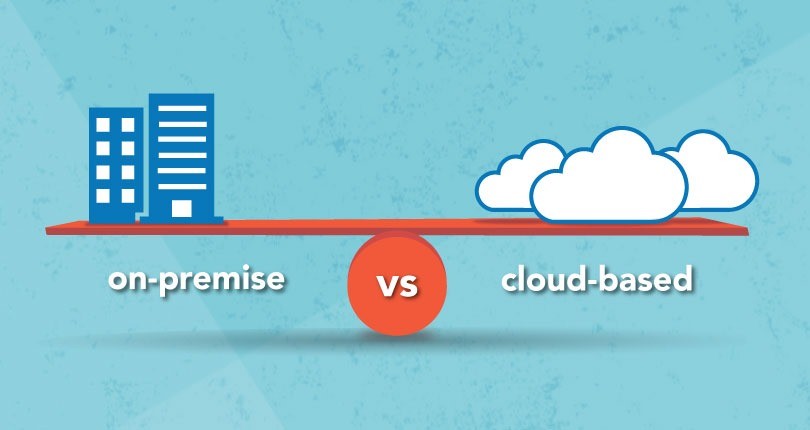Data breaches pose a significant threat to businesses worldwide, leading to compromised data, financial losses, and damage to reputation. As cyberattacks become more sophisticated, organizations must have a clear, structured incident response plan. The speed and effectiveness of your response can reduce the impact of a breach and help protect your business in the long run. Immediate action, careful planning, and swift containment are crucial to preventing further data loss and securing sensitive information.
A well-executed response protects your data and ensures compliance with various legal and regulatory requirements, such as data breach notification laws. Whether facing a small-scale incident or a significant breach, how you address the situation will significantly influence the overall outcome. Interact with Managed IT Services Los Angeles experts to develop a robust incident response strategy that ensures rapid detection, effective containment, and long-term security improvements.
In this blog, we will explore the importance of incident response and provide a step-by-step guide for handling data breaches and recovery measures to ensure minimal damage.
What is an Incident Response?
Incident response involves finding, managing, and reducing security breaches or cyberattacks in an organization’s IT systems. Its goal is to identify the breach quickly, contain the damage, and restore normal operations while minimizing harm. The process includes detection, containment, eradication, recovery, and preserving evidence for further investigation. A well-prepared incident response plan helps organizations respond efficiently, comply with legal requirements, and enhance future security measures, ultimately reducing the impact of a security event.
A Step-by-Step Incident Response Guide for Handling a Data Breach
Experiencing a data breach can be one of the most stressful situations for any business. But knowing how to respond quickly and effectively can make all the difference. Below is a step-by-step guide on handling a data breach, ensuring you can minimize the damage and recover faster.
Detect and Identify the Breach
The first step in managing a data breach is detecting it as early as possible. The quicker you identify the signs of a breach, the less damage it can cause.
Look for Unusual Activities: Sudden spikes in network traffic, unauthorized login attempts, or missing files.
Use Monitoring Tools: Monitor your systems and software for any signs of irregular behavior or access.
Once you’ve detected something suspicious, confirming whether it is indeed a breach is essential. Sometimes what seems like an attack might be a false alarm, so validation is crucial.
Contain the Breach
After confirming that a breach has occurred, your next priority is to contain it. You need to stop the attacker from doing any more damage or accessing additional sensitive data.
Isolate Affected Systems: Disconnect compromised devices or networks to prevent the breach from spreading.
Limit Access: Change passwords, deactivate user accounts, or temporarily shut down affected systems until you can assess the situation.
Containment helps prevent the breach from worsening while you move on to the next steps.
Eradicate the Threat
Once you’ve contained the breach, it’s time to eliminate the threat entirely. This involves identifying how the attacker got in and closing any doors they used to break in.
Scan for Malware or Unauthorized Access points: Find and remove any malicious software or backdoors the attacker may have left behind.
Patch Vulnerabilities: If the breach was caused by a vulnerability in your system, fix it to prevent future attacks.
Eliminating the threat means you’re taking steps to ensure it doesn’t happen again.
Preserve Evidence
Preserving evidence is an essential step, especially if the breach leads to legal or regulatory investigations. Make sure you keep any important data. It can help you learn how the problem happened and who did it.
Document Everything: Keep detailed records of your actions, who was involved, and any communications.
Save Logs and Data: Preserve system logs and any related data for forensic investigations.
Evidence can help you trace the cause of the breach and might be needed for future legal or regulatory matters.
Assess the Impact
Eradicating the threat and preserving evidence, assess the damage caused by the breach. This includes determining what data was exposed, which systems were affected, and how severe the impact is on your business.
Review Compromised Data: Identify what information was stolen, altered, or damaged.
Evaluate Business Impact: Assess how this breach will affect your customers, operations, and reputation.
Knowing the full extent of the damage will help you decide on the next steps and communicate clearly with those affected.
Notify Internal Stakeholders
Inform key stakeholders within your organization. This will help everyone involved understand the situation and take appropriate action.
Alert The Team: Immediately notify your IT staff, security teams, and other relevant personnel.
Provide Instructions: Give clear guidelines on what actions need to be taken by each team member.
Keeping your internal team informed ensures that the response is coordinated and efficient.
Monitor for Future Threats
A data breach doesn’t just stop after you’ve dealt with the immediate incident. You must continue monitoring your systems for any signs of further attacks.
Set up Continuous Monitoring: Use security tools that help you monitor your network and devices.
Watch for Abnormal Behavior: Be alert for anything unusual, such as unauthorized access attempts or new malware threats.
Proactive monitoring allows you to spot future threats before they cause major damage.
Collaborate with External Experts
Sometimes, handling a data breach requires more expertise than your internal team can provide. In these cases, bringing in external help is a good idea.
Consult with CyberSecurity Experts: They can help identify the cause of the breach, improve your security posture, and guide you through the response process.
Engage Law Enforcement if necessary: Reporting it to authorities might be required if the breach involves criminal activity.
External experts can offer specialized advice to enhance your response efforts and help you recover faster. If you’re looking for expert guidance and support during a data breach, reach out to the IT Support Los Angeles team.
Report to Regulators and Authorities
Depending on the nature and scope of the breach, you may be legally required to report the incident to relevant authorities or regulators. This is particularly important if personal data or sensitive information is exposed.
Follow Legal Requirements: Sometimes, you must notify customers, data protection agencies, or law enforcement.
Be Transparent: Provide clear, honest information about the breach and how it is being addressed.
Reporting the breach helps you comply with laws and regulations while maintaining customer trust.
Review and Strengthen Security Posture
After the dust settles, it’s time to evaluate and improve your security measures to prevent future breaches.
Conduct a Security Audit: Review your current security systems and policies to identify weaknesses.
Implement Stronger Defenses: Update your security protocols, install more advanced protection tools, and train your staff on best practices.
Strengthening your security posture ensures that your business is better protected in the future and can respond more effectively to any potential threats.
Final Thoughts
Effectively managing a data breach requires prompt action and a well-organized response to minimize damage and prevent future incidents. By following a straightforward, step-by-step approach, from early detection to strengthening security measures, your business can limit the impact, protect sensitive data, and maintain stakeholder trust. The key is to act quickly, stay organized, and learn from the breach to improve your security practices. This will help ensure that your business is better prepared for potential threats in the future.










